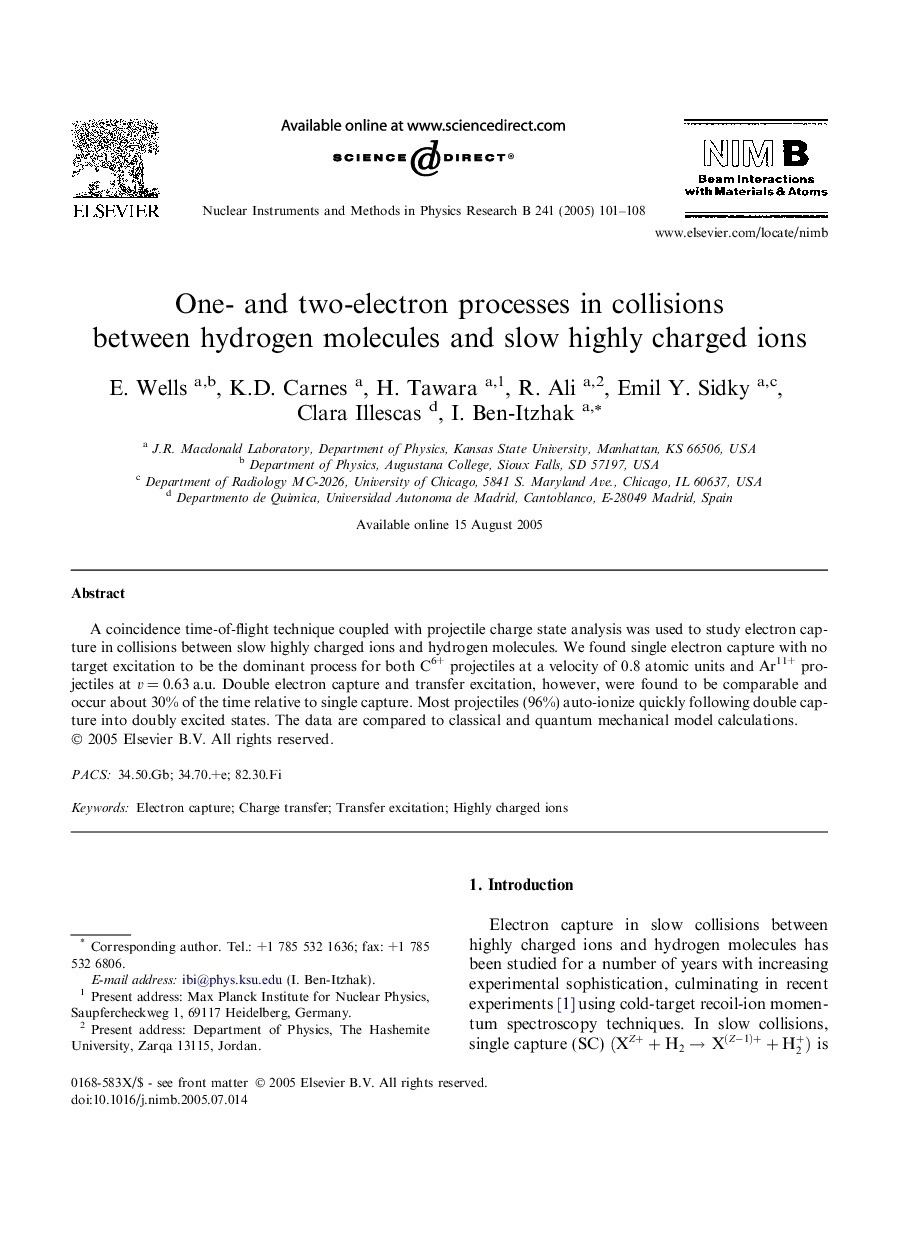| Article ID | Journal | Published Year | Pages | File Type |
|---|---|---|---|---|
| 9817413 | Nuclear Instruments and Methods in Physics Research Section B: Beam Interactions with Materials and Atoms | 2005 | 8 Pages |
Abstract
A coincidence time-of-flight technique coupled with projectile charge state analysis was used to study electron capture in collisions between slow highly charged ions and hydrogen molecules. We found single electron capture with no target excitation to be the dominant process for both C6+ projectiles at a velocity of 0.8 atomic units and Ar11+ projectiles at v = 0.63 a.u. Double electron capture and transfer excitation, however, were found to be comparable and occur about 30% of the time relative to single capture. Most projectiles (96%) auto-ionize quickly following double capture into doubly excited states. The data are compared to classical and quantum mechanical model calculations.
Related Topics
Physical Sciences and Engineering
Materials Science
Surfaces, Coatings and Films
Authors
E. Wells, K.D. Carnes, H. Tawara, R. Ali, Emil Y. Sidky, Clara Illescas, I. Ben-Itzhak,
